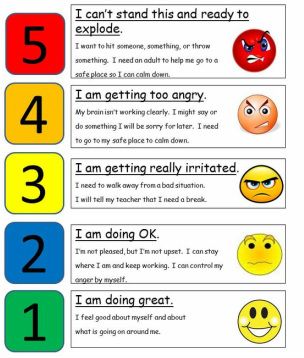Every person on the autism spectrum scale is different. If you have met one person having autism, you have met one person on a spectrum scale.

This image represents the 5 pointer scale. We can control the emotions using this scale. Every step of the scale shows different emotions. This tool is created by Kari Dunn Buron and Mitzi Curtis so that the students with Asperger profile should become aware of their feelings and regarding their reactions.
If you need more information or you have a question regarding Autism Spectrum Scale, you can discuss it with our HearingSol healthcare professionals, just give us a call on +91-9327901950. We are always here to help you.
Every individual on the spectrum exhibits different behavior. This can only be done by answering a question such as What is the autism spectrum scale?
Autism spectrum scale includes –
Classic Autism
It is the highest form of autism. Anyone suffering from classic autism will face difficulty in social interaction and speech. They are oversensitive and avoid contact with other people. Thus, Classic autism is also known as ‘severe autism’, ’Kanner’s Syndrome’ and ’autism disorder’.
Symptoms of Classic autism :
In children
- Avoid coming in contact with people and social situations.
- Exhibits very less or no eye contact.
- Involves himself in self-harming such as hitting and biting himself.
- Does not accept change in routine.
- Speech delay.
- Over-reactive to some kind of pain and under-reactive to other types of pain.
- Play with toys in an unusual manner.
In adults
- Difficulty in communication.
- Do not leave their comfort zone.
- You should try to remain in their room and follow their pre-ordered routine.
- Do not make eye contact with others.
- Prefers to interact with a particular object such as T.V. and feel safe while doing so.
Asperger’s syndrome
It is the Autism Spectrum Disorder in which people have problems in communication and interaction and the way they see the world. In other words, Asperger’s syndrome is the permanent condition, it has no cure but many people live long and healthy if guided properly.
Symptoms of Asperger’s syndrome :
- A lack of ‘common sense’.
- Minimal or no interaction with people.
- Unusual behavior and manner.
- Repetitive, robotic or inappropriate speech.
- Obsession with a pattern or music.
- No sympathy: They face difficulty in expressing their feelings and understanding the gestures of people. It leads to the person with Asperger to misunderstand others.
- Isolation from social interactions: They often focuses on their own interests. Not only this but also they do not care about what others feel. This does not imply that they are self-centered or self-obsessive. This is due to the incapability to understand the feelings and emotions of others.
- Difficulty in sensing: Their physical and sensory development is delayed. Activities that need coordination like walking, swimming, talking develop late in Asperger. They follow a repetitive behavior.
Pervasive Developmental Disorder, Not Otherwise Specified (PDD-NOS)
Pervasive Developmental Disorder covers all Autism Spectrum and Rett Syndrome. The person suffering from PDD-NOS have not only poor social skills but also weak communication skills.
Symptoms of PDD-NOS :
In child
- Always play with a toy in the same manner and arrange them in a sequence all the time.
- Insensitive to pain.
- Eat only a few foods and in particular textures.
- Unaware of danger such as hot things.
- Likes to spin objects.
In adults
- Avoids eye contact
- Intellectual disability
- Complications with breathing, including hyperventilation and breath-holding when awake.
